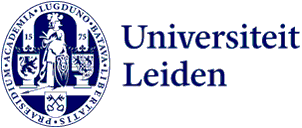
Website shows the history of Sri Lanka’s ‘Slave Island’: ‘Soon there will be none of it left’
In the eighteenth century, the Dutch East India Company (VOC) housed its enslaved people on ‘Slave Island’ in Colombo, the capital of Sri Lanka. Today ‘Slave Island’ is under serious threat from property developers. Senior lecturer Alicia Schrikker, together with her Sri Lankan colleagues Iromi Perera and Varuna de Silva, and Dries Lyna of Radboud University, has brought this history to life in an interactive website.
‘Slave Island is changing from a beautiful place into something dreadful,’ says de Silva, explaining why he is interested in this neighbourhood. ‘All the old buildings, mainly houses blocks of families who have lived there for generations are being demolished and the original residents often have no idea where to go.’ Schrikker adds: ‘The big construction companies are replacing them with high-rise developments, but their ideas are very badly planned and the buildings are not suitable for the families who live there.'
Adding layers
This is not only taking away the living space for the diverse groups of residents who traditionally live in Slave Island it’s also erasing the neighbourhood’s colonial history. The name ‘Slave Island’ is still a reminder of the dynamic and multi-ethnic old neighbourhood in the centre of Colombo, while the Sinhala name used by the residents is Kompannavidiya (Company Street), which also refers to the historic links to the VOC.
‘For some time, Varuna and Iromi have been working with other colleagues to preserve the heritage and communities there,’ says Schrikker. ‘I was very impressed by one of their presentations in 2019, and I thought the historical research project I was working on at the time could add an extra layer.’
Together with Dries Lyna, she decided to start work on this. A grant from Dutch Culture (RCE) made it possible for Schrikker to coordinate the Sri Lankan archive research on the neighbourhood’s history and collect material in the Netherlands. Meanwhile, Perera and her think tank focused on the stories that still live on. ‘We interviewed older people on Slave Island, encouraging them to recall the 1950s and 1960s,’ she says. ‘What was urban life like back then, in terms of buildings and livelihoods? Where did they do their shopping?’ Not everyone gave equally descriptive responses. ‘Sometimes they just replied “not much”, when we asked what they did after school,’ laughs Perera, ‘but we still managed to conduct ten highly informative interviews.’
Interactive website
The interviews formed the basis for texts on the project website, where visitors can navigate through the neighbourhood’s history using texts and maps. Perera: ‘We deliberately chose to use a website rather than, for example, an article, which doesn’t give you the option of including links. A website provides a great way to present a lot of different information.’
The researchers’ aim in creating the website is not only to show the changes in the neighbourhood, but also to correct the ‘migrant narrative’. ‘In other parts of South Asia, low-income urban communities are indeed often made up of migrants from other parts of the country, but these communities in Colombo have lived here for many generations,’ says Perera.
Schrikker adds: ‘Their roots originate in the multi-layered Dutch and British colonial history: the ancestors of many of these people were brought here in the eighteenth and nineteenth centuries as enslaved people or soldiers from different regions around the Indian Ocean. The names of old streets, like Malay Street and Java Lane, are a reminder of this. Java Lane is one of the streets that was flattened for new buildings, and now only the mosque is still there.’
'Completely destroyed'
De Silva has given visual shape to these stories with a variety of maps, old postcards and photographs from his collection. ‘I collect anything I can get my hands on,’ he admits. ‘The people who live in Slave Island have very little influence. They don’t have a voice. We’re hoping to create awareness by making them visible, even though theirs is not much left to be saved on in Slave Island. The once vibrant neighbourhood has been completely destroyed.
Not only residential neighbourhoods but historically, socially and architecturally important buildings, which were landmarks and icons in Slave Island were flattened to the ground. A sad replica of one of the buildings was built, while on another site, the longest shop house building in Colombo, if not Sri Lanka, is empty behind a temporary metal wall.’
Wider community
‘There’s a wider community that’s interested in Slave Island,’ adds Perera. ‘We’re going to share the website with them via social media, and also via WhatsApp and email. The combination of the historical perspective, the recent developments and the community level can really make an impact.’
Alicia Schrikker is a senior lecturer in the Institute for History. Iromi Perera is a sociologist and works as a co-founder and senior researcher at the think tank and research centre Colombo Urban Lab. Varuna de Silva is an architect and a senior lecturer at the University of Moratuwa. Dries Lyna is a university lecturer in Cultural History at Radboud University. Sanayi Marcelline collaborated as research-assistant.
